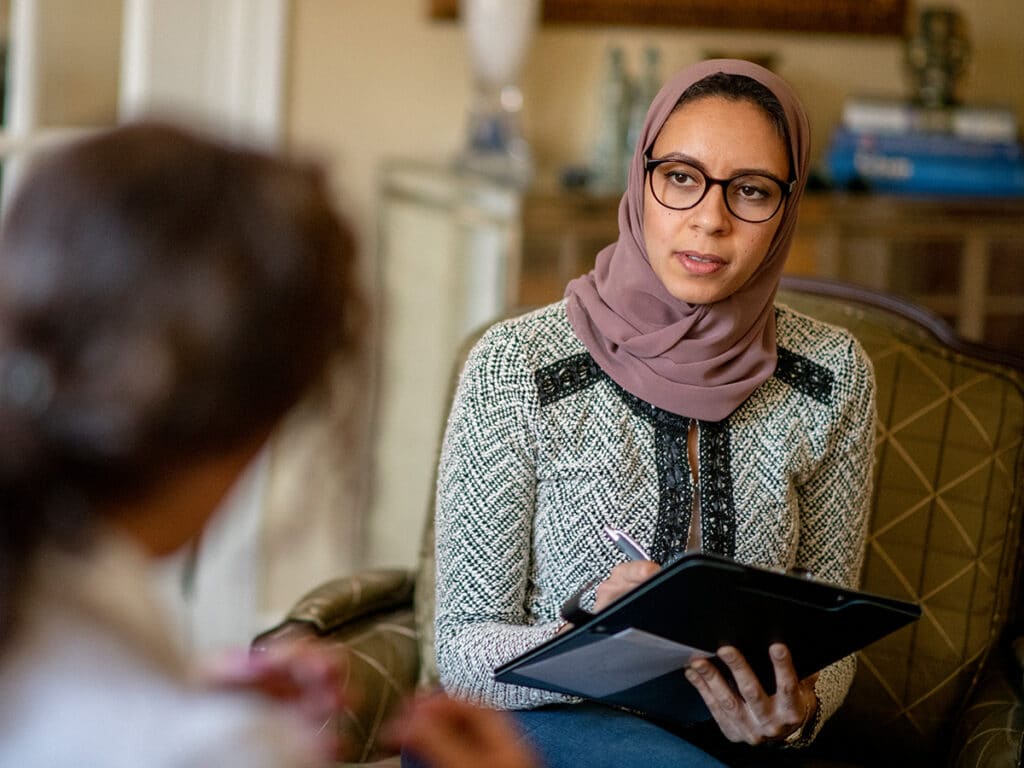Finding a therapist is like building any meaningful relationship — it can take time, and not every match will be the right one. If your first experience doesn’t meet your needs, don’t give up. The right therapist for you is out there. Trust that your comfort, growth, and healing are worth the effort to keep looking.
As you look for a therapist, consider asking for referrals from family, friends, or trusted healthcare providers. Read websites and online reviews, and try using resources like the Steve Fund and PsychologyToday.com to search for therapists who specialize in caring for culturally diverse populations in your geographical area.
Three tips to help you get started
1. Look for a certified professional who is:
- Interested in fostering a genuine connection
- Aware of their own biases
- Mindful of making assumptions
- Engaged in ongoing self-reflection
- Respectful of diverse experiences and how the client identifies themselves
- Focused on centering the client’s perspective and experiences
- Curious and shows a desire to learn about the client’s cultural background
If cost is a concern, look into workplace-based services such as an Employee Assistance Program or local clinics that provide therapy on a sliding scale to clients with limited or no insurance coverage.
2. Define what you hope to accomplish.
If you’re ready to see a therapist for the first time, it can be helpful to reflect on your concerns, needs, and goals. Before your first session, you may find it helpful to consider questions like the ones below, and even take a few minutes to write out your answers.
- What are the concerns that you would like to address?
- What have you tried in the past to help with these concerns?
- What did you find helpful, and what was not helpful?
- Have you ever seen a mental health professional in the past?
- Have you ever taken medication(s) for mental health concerns? If so, which medication(s), and what was your response?
- Do you have a family history of mental health challenges?
- What behaviors or patterns of thinking would you like help letting go of through therapy?
- In what way(s) are you hoping to grow as a result of therapy?
- What are some specific positive changes you would like to see?
3. Ask questions in your first session to get to know the therapist and set the stage for a productive relationship. For example:
- What is your approach to therapy?
- What types of therapy or techniques do you use (CBT, psychodynamic, trauma-informed, etc.)?
- Have you worked with clients who have similar concerns or identities to mine?
- How do you tailor your approach for each client?
- How do you consider culture, identity, and lived experiences in your work?
- What does a strong therapist-client relationship look like to you?
- How do you create a safe, trusting space for clients?
- What happens if I ever feel uncomfortable or misunderstood during our sessions?
- How will we set goals together?
- How do you track progress or know when therapy is working?
- What can I expect in terms of timeline or outcomes?
- What is your fee, and do you offer sliding-scale options?
- Do you accept insurance or provide superbills?
- How do you handle cancellations or rescheduling?
As you start or continue your mental health journey, remember that everyone needs someone to talk to — and that needing support is not a weakness. Consider giving therapy a chance, and make your plan to prioritize your own mental health and emotional well-being.
Further reading:
- Types of Therapy shares the common types of therapy, the types of mental health professionals who provide psychotherapy, and the approach each form of psychotherapy takes.
- Seeing a Therapist explores the decision to see a therapist and provides a guide you can take with you to help you get the most out of your first visit.


